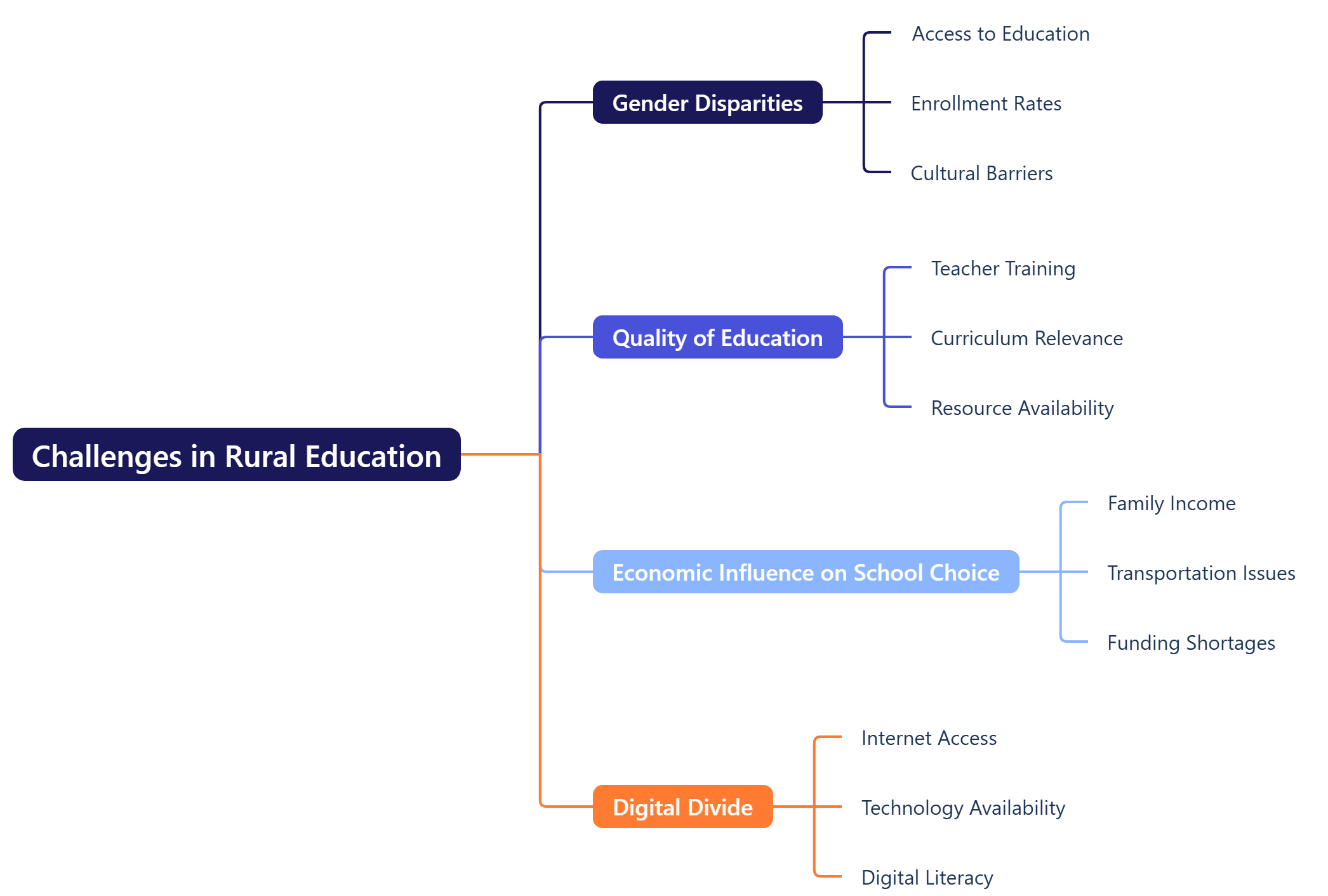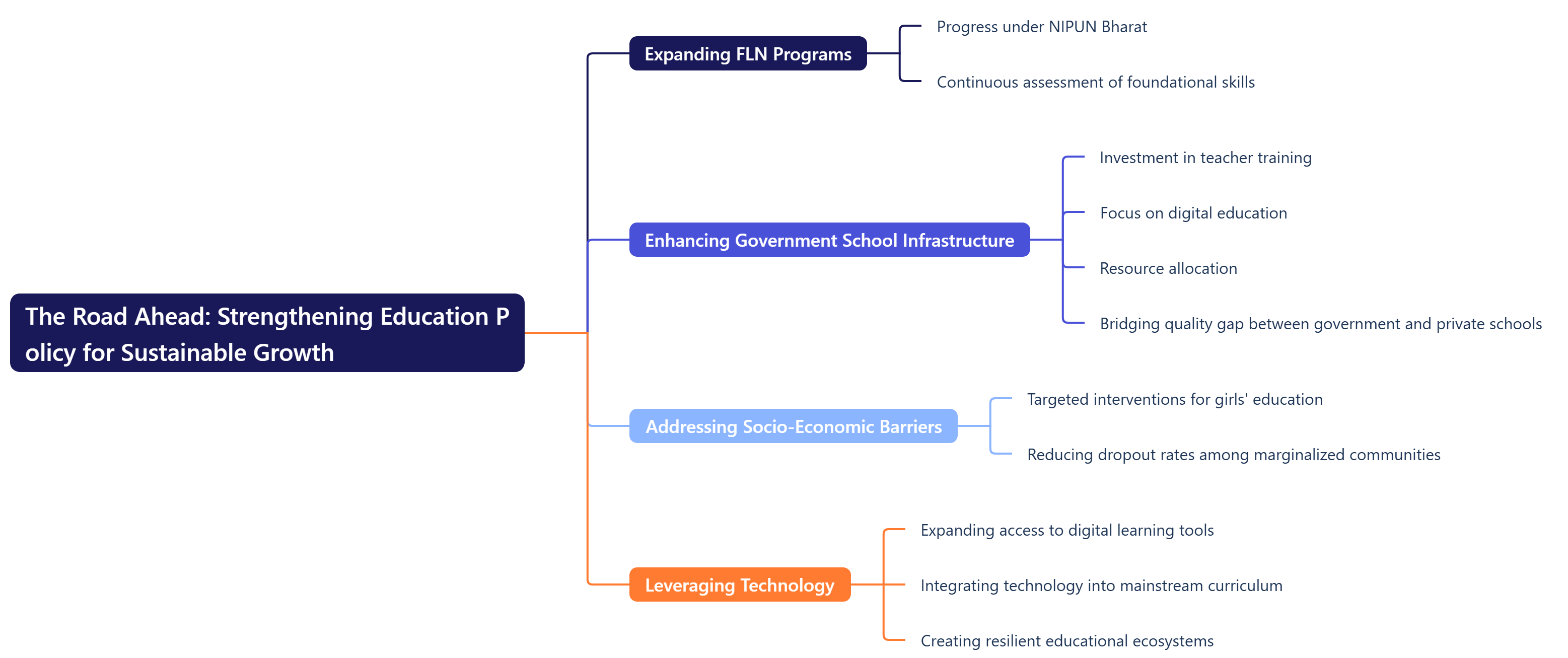|
The Annual Status of Education Report (ASER) 2024 has provided crucial insights into the schooling and learning outcomes of children across rural India. With the implementation of the National Education Policy (NEP) and a renewed focus on Foundational Literacy and Numeracy (FLN), the report highlights significant changes in enrolment patterns, learning recovery post-pandemic, and the shifting preference between government and private schools.
Post-Pandemic Enrolment Trends: Shifts between Government and Private Schools
- ASER 2024 reveals that school enrolment rates remain high, with the proportion of children aged 6-14 not enrolled in school standing at 1.9%. This marks only a slight increase from the 2022 figure of 1.6%, reflecting a stable educational landscape post-pandemic. Interestingly, enrolment among 15-16-year-olds, a group traditionally at higher risk of dropping out, has improved significantly, decreasing from 16.1% in 2010 to 7.9% in 2024.
- However, a notable reversal in enrolment trends between government and private schools has been observed. During the COVID-19 pandemic, government school enrolment had surged due to economic distress and the shutdown of many low-cost private schools. The proportion of students in government schools increased from 65.6% in 2018 to 72.9% in 2022. ASER 2024 now indicates that this trend has reversed, with government school enrolment dropping back to 66.8%, close to pre-pandemic levels. This suggests that families who shifted to government schools out of necessity during the crisis are now returning to private institutions as economic stability is restored.
Learning Recovery and the Role of Foundational Literacy and Numeracy (FLN)
- ASER 2022 had highlighted a significant decline in reading and arithmetic skills among students due to prolonged school closures. Reading levels of students in Standards 3 and 5 had fallen below their 2014 levels. The 2024 report, however, presents an encouraging trend: learning levels have not only recovered but have surpassed pre-pandemic benchmarks in many areas.
- This recovery can largely be attributed to the NEP 2020’s strong emphasis on FLN through initiatives like the NIPUN Bharat Mission. Since 2021, states have implemented targeted interventions aimed at improving foundational learning in primary grades. The ASER 2024 data suggests that these efforts are beginning to yield results, with noticeable improvements in literacy and numeracy across rural districts.
Challenges in Rural Education: Economic, Gender, and Policy Implications

Despite the positive trends, ASER 2024 highlights several persistent challenges:
- Gender Disparities: While enrolment rates for girls have improved, the dropout rate among adolescent girls remains a concern, especially in socio-economically disadvantaged regions.
- Quality of Education: Although enrolment levels are high, the quality of education in government schools still lags behind private institutions. Teacher shortages, infrastructure gaps, and resource constraints continue to impact learning outcomes.
- Economic Influence on School Choice: The shift back to private schooling indicates that economic stability plays a crucial role in parental decisions about education. The affordability and quality of private education remain key factors influencing enrolment patterns.
- Digital Divide: The pandemic underscored the importance of digital learning, yet many rural students still lack access to technological resources necessary for hybrid learning models.
Sociological Perspectives on Rural Education Disparities
- From a Functionalist Perspective, Emile Durkheim viewed education as a means of socialization and transmission of collective conscience. He argued that a well-structured education system strengthens national integration. The persistent gender and digital divide in India, however, suggests a failure in achieving an equitable education system that promotes social cohesion.
- Karl Marx’s Conflict Theory emphasizes how education perpetuates social inequalities. The disparities in rural education, particularly the preference for private schools, align with Marx’s view that education serves the interests of the dominant economic class. The privatization trend observed in ASER 2024 could be seen as a way in which wealthier classes maintain their socio-economic advantage.
- Pierre Bourdieu’s concept of Cultural Capital is particularly relevant in explaining the disparities in learning outcomes between private and government schools. Bourdieu argues that students from privileged backgrounds have greater exposure to linguistic and cultural resources, giving them an advantage in academic performance. This theory helps understand why families prefer private schools, which are perceived to offer better academic and social capital.
- Ivan Illich’s theory of Deschooling Society can also be applied to analyze the digital divide. Illich critiqued formal schooling and advocated for informal, community-based learning models. ASER 2024’s findings on the limited access to digital education in rural areas highlight the need for alternative learning mechanisms that go beyond conventional schooling.
The Road Ahead: Strengthening Education Policy for Sustainable Growth

The ASER 2024 findings emphasize the need for sustained investment in educational reforms. Key recommendations include:
- Expanding FLN Programs: Building on the progress made under NIPUN Bharat and ensuring continuous assessment of foundational skills.
- Enhancing Government School Infrastructure: Investing in teacher training, digital education, and resource allocation to bridge the quality gap between government and private schools.
- Addressing Socio-Economic Barriers: Implementing targeted interventions to support girls’ education and reduce dropout rates among marginalized communities.
- Leveraging Technology: Expanding access to digital learning tools and integrating them into the mainstream curriculum to create resilient educational ecosystems.
Conclusion: A Renewed Path for Rural Education
ASER 2024 reaffirms that India’s rural education system is gradually stabilizing post-pandemic, with promising improvements in foundational learning and enrolment. However, challenges remain in ensuring equitable access to quality education for all children. Moving forward, a collaborative approach involving government, educators, and communities will be essential in building an inclusive and resilient education system that aligns with India’s long-term developmental goals.
|




